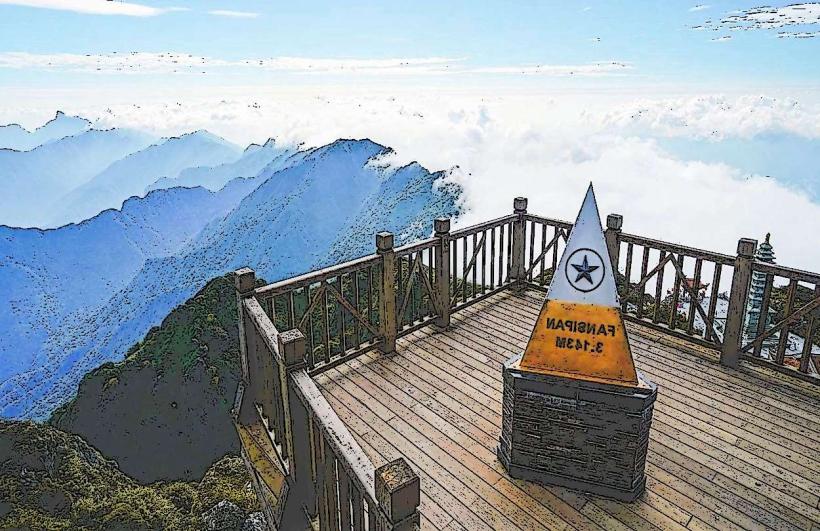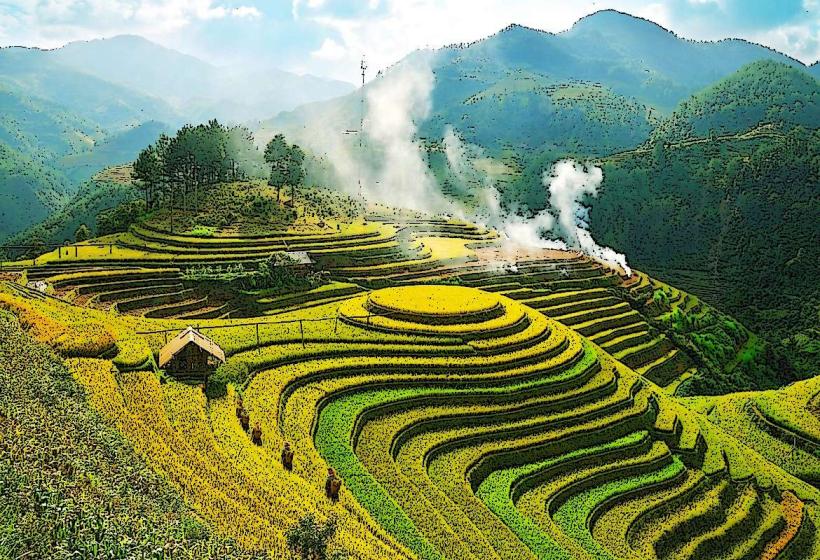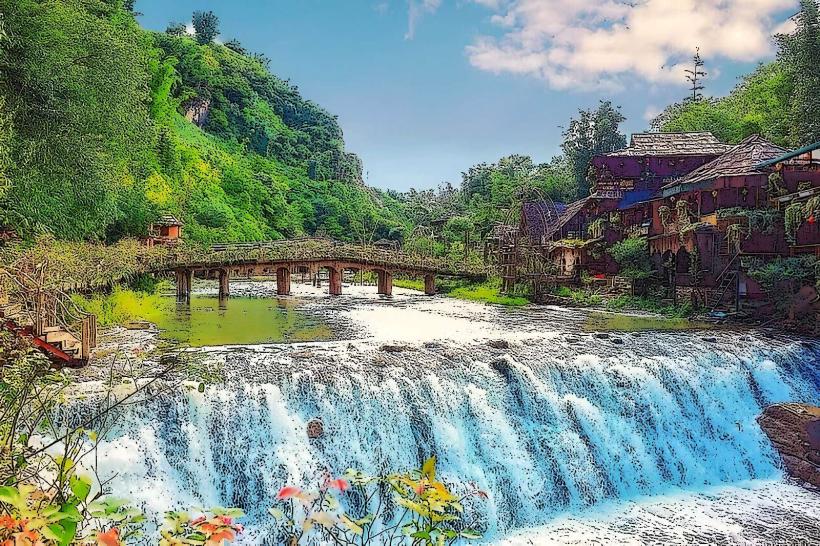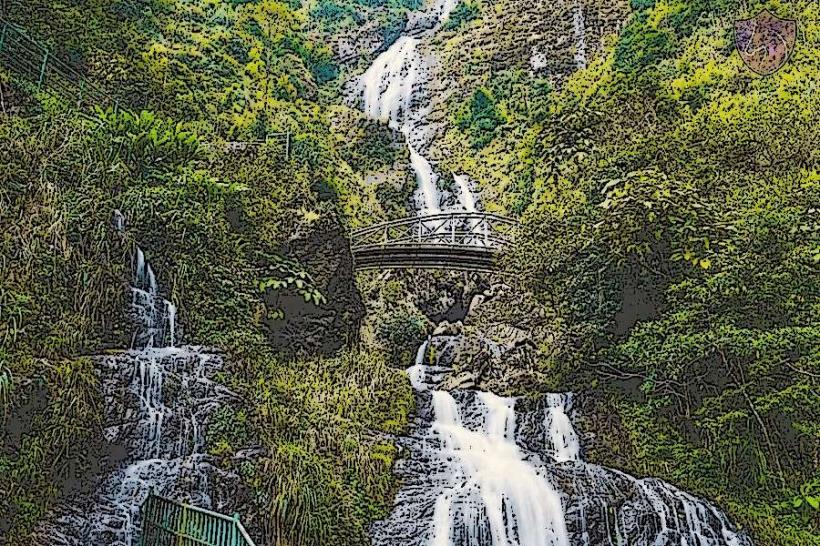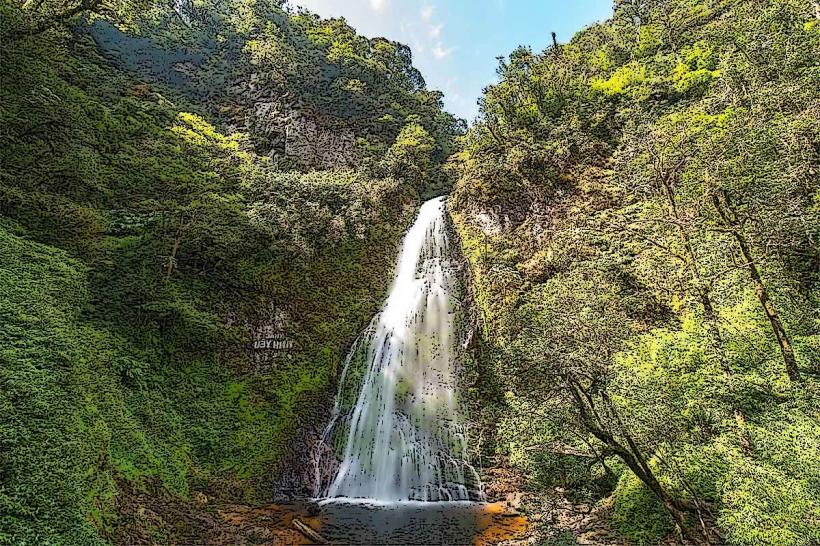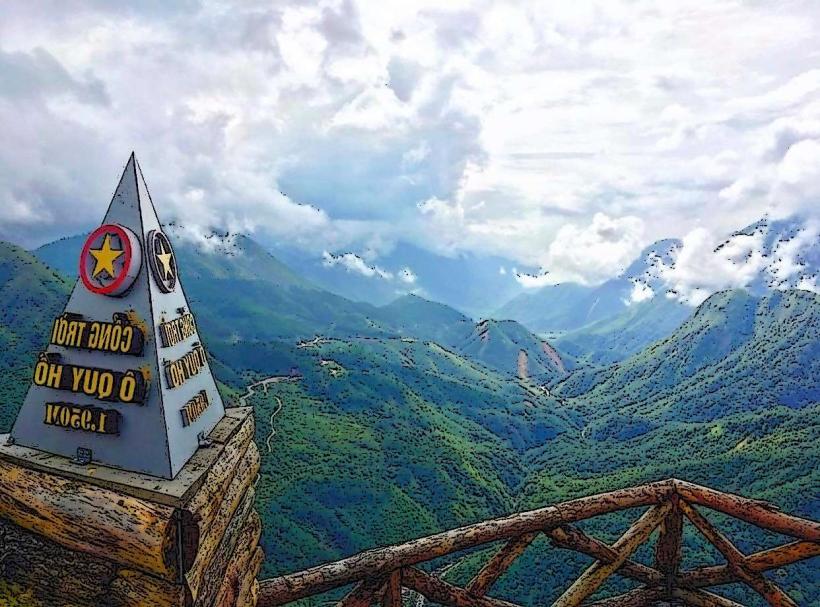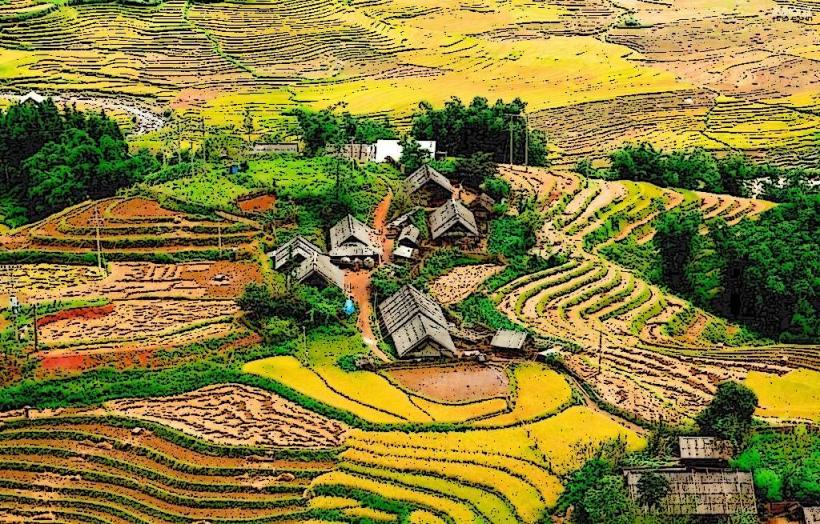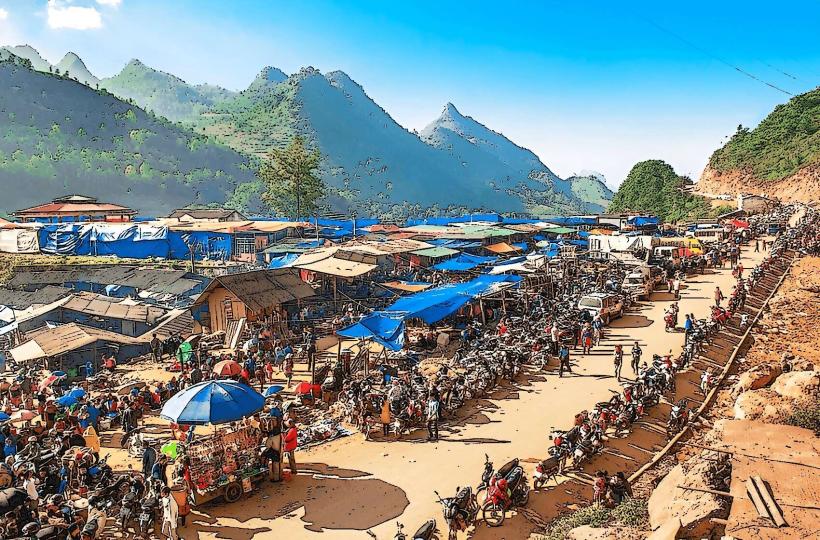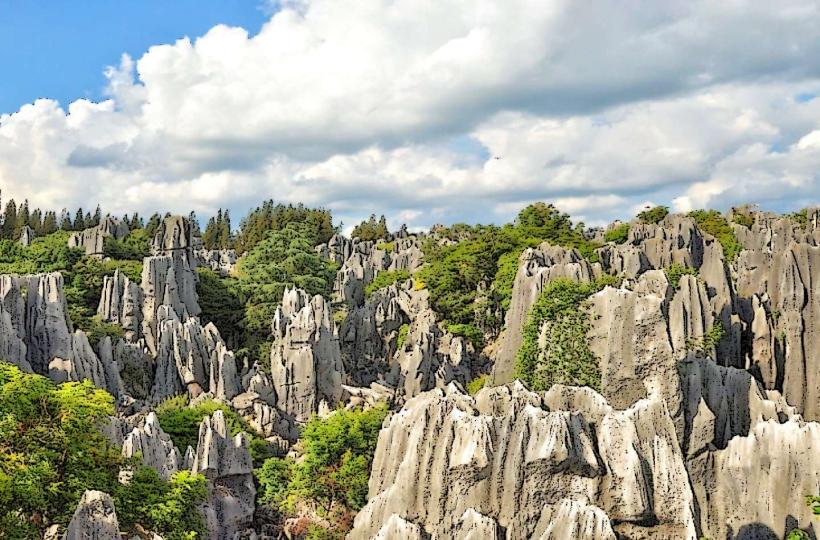Information
City: SapaCountry: Vietnam
Continent: Asia
Sapa, Vietnam, Asia
Overview
Sapa is a mountain town in Lao Cai Province, northern Vietnam, where mist drifts over terraced rice fields and colorful markets bustle with the traditions of its many ethnic groups, what’s more travelers flock here not just for the quiet forests and cool mountain air, but also to discover the rich traditions of the many ethnic minority communities who call the region home.Sapa sits roughly 320 kilometers (199 miles) northwest of Hanoi, tucked into the misty folds of the Hoàng Liên Son mountains, in conjunction with the area stays pleasantly cool, with breezes that smell faintly of pine, and its sweeping views draw both visitors and locals year-round.Sapa’s town center is miniature, with just a modest number of residents, but the hills and valleys around it are alive with Hmong, Tay, Dzao, and Giay communities, subsequently in Sapa, most people speak Vietnamese, but you’ll also hear the lilting tones of Hmong, Dzao, and Tay in the markets and along the winding mountain paths.In the tourism industry, many people speak English, greeting visitors with a quick “Hello” as they step inside, along with sapa’s past is rich, woven through the lives and traditions of the region’s many ethnic groups, from the luminous embroidery of Hmong skirts to the ancient stories told by the Dao.During the late 19th century, under French colonial rule, Sapa grew into a hill station where cool mist clung to pine-covered slopes, therefore the French came to the area for its cool, crisp air-a welcome break from Hanoi’s heavy, stifling heat, kind of Sapa drew French colonists and missionaries, who built stone churches and other structures that still rise against the misty hills today, moreover the region’s home to a mix of ethnic minority groups, families whose roots run deep here, stretching back hundreds of years.The Hmong, Dzao, and Tay still hold on to their traditional ways, from brightly embroidered jackets and distinct languages to farming the steep, green hillsides, on top of that over the last few decades, Sapa has drawn crowds for its mist-covered mountains and sweeping green valleys, yet it still holds tight to the traditions and heritage of its indigenous communities.Sapa sits high in the Hoàng Liên Son mountains, where jagged peaks rise above deep valleys and green rice terraces spill down the slopes, then mount Fansipan, rising 3,147 meters (10,326 feet) above the clouds, is Vietnam’s tallest peak and proudly known as the “Roof of Indochina.” Trekkers flock here for the challenge and the sweeping mountain views.Mind you, Muong Hoa Valley, cradled by towering mountains, stretches out in sweeping tiers of green rice paddies, making it a favorite for hikers and anyone chasing that perfect photograph, at the same time about 12 kilometers from Sapa, Silver Waterfall (Thac Bac) drops nearly 80 meters in a white, rushing curtain, making it one of the region’s biggest and most unforgettable sights, fairly Ta Phin Village, home to the Red Dzao people, offers vibrant cultural experiences, from the rhythmic clack of looms weaving vivid textiles to the earthy scent of herbs prepared for traditional medicine, consequently sapa enjoys a cool, temperate climate-a sharp break from the heavy, sun-baked heat that blankets most of Vietnam.I think, Winter, from December to February, brings a sharp chill, with temperatures often dipping to 0–5°C (32–41°F) - crisp enough for frost to silver the grass by morning, as a result fog often rolls in, and now and then snowflakes drift down, especially up in the higher altitudes.Summer, from June to August, stays mild and pleasant, with daytime highs between 15°C and 25°C-just warm enough for a stroll in the sun without breaking a sweat, in conjunction with it’s the rainy season, with sudden heavy showers drumming on the leaves, yet the terraced rice fields glow in their deepest, brightest green.Spring and autumn-March to May and September to November-are the ideal months to visit, likewise days stay pleasantly mild, the air feels crisp, and the vivid, cloudless skies make mountain trails and city streets a joy to explore, sort of In Sapa, several ethnic minority groups make their home, each preserving distinct customs, languages, and traditions-like radiant handwoven scarves that catch the morning light, meanwhile in Sapa, you’ll meet a rich mix of communities-Hmong in glowing embroidered skirts, Dzao, Tay, Giay, and Hoa, somewhat Scattered through the mountains and tucked into green valleys, these groups live in tiny villages, holding on to their traditions even as modern life presses in, on top of that in Sapa, people have long depended on farming, especially growing rice in the emerald-green terraces that step down the hillsides, partially The famous terraced rice fields rise in green steps along the hillsides, telling the story of centuries of farming in the region, besides textiles and handicrafts flourish here, with the Hmong and Dzao especially famed for their intricate work-brightly embroidered clothing, hand-stitched bags, and soft, patterned scarves that feel warm against your fingers.In Sapa, you’ll spot these handmade treasures in bustling street markets or tucked away in quiet village stalls, on top of that animism, Buddhism, and Christianity shape the spiritual life of the region’s many ethnic groups, while in some towns you’ll still discover Catholic churches standing from the days of French rule.Sapa’s economy leans heavily on agriculture, with terraced rice fields climbing its hillsides, while tourism and traditional handicrafts keep the town bustling, likewise agriculture: Rice farming drives the economy, and the tiered green terraces ripple across the hills like steps carved into the earth, fairly Along with rice, farmers grow corn, vegetables, and fragrant herbs in the rich, obscure soil, on top of that tourism: Sapa has risen to the top of Vietnam’s must-visit spots, drawing travelers from around the world and across the country to its misty mountain trails.Eco-tourism, adventure roam, and cultural trips all pump money into the local economy, from hiking guide fees to handmade market souvenirs, consequently visitors arrive for the scenic treks and rich cultural experiences, eager to glimpse the daily life of indigenous ethnic groups-like women weaving dazzling wool by the fire.Handicrafts and Textiles: In Sapa’s bustling markets, you’ll find one-of-a-kind pieces-hand-embroidered garments, soft woven scarves, and glinting bits of silver jewelry, consequently local artisans sell these goods, and they’re a vital part of the town’s economy-like the handwoven baskets you behold stacked by the market stalls.Fansipan Mountain, often called the “Roof of Indochina,” towers above Vietnam as its highest peak, with mist curling around its rocky summit, besides adventurers can hike to the summit, a steep climb that leaves your legs aching but your spirit soaring at the view from the top.safeFamous for its sweeping terraced rice fields that glow gold at harvest, Muong Hoa Valley is among the most breathtaking places to detect in Sapa.You can hike the winding trails through the valley, chat with friendly locals, and watch farmers turn the soil the way their grandparents once did, on top of that silver Waterfall, or Thac Bac, lies about 12 kilometers from Sapa, where icy mist drifts off its rushing white cascade.Towering above most in the region, the waterfall crashes into a misty pool, and the nearby trails make easy, scenic walks for a picnic, in addition just outside Sapa, Cat Cat Village sits among terraced hills, offering a close-up inspect at the daily life of the Black Hmong, from handwoven cloth drying in the sun to the hum of looms inside wooden homes, in a sense Visitors can wander through vintage wooden houses, watch artisans shape clay and weave vivid fabrics, and take in the village’s quiet, rolling hills.
Author: Tourist Landmarks
Date: 2025-10-29
Landmarks in sapa

